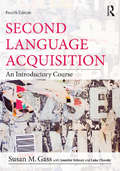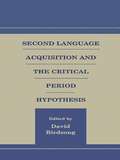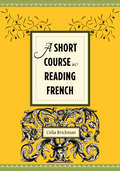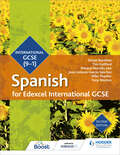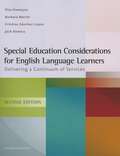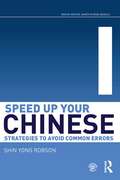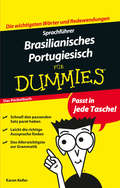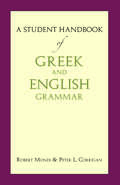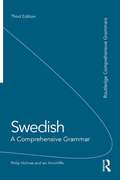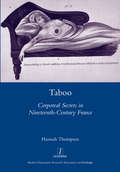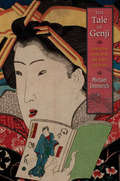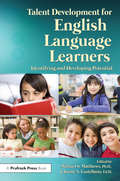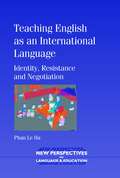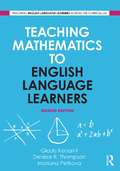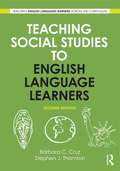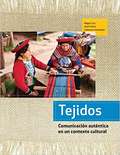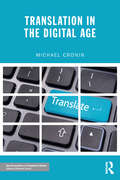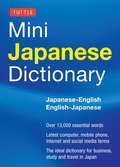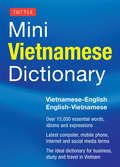- Table View
- List View
Second Language Acquisition: An Introductory Course
by Susan M. GassNow in a fourth edition, this bestselling introductory textbook remains the cornerstone volume for the study of second language acquisition (SLA). Its chapters have been fully updated, and reorganized where appropriate, to provide a comprehensive yet accessible overview of the field and its related disciplines. To reflect current developments, new sections on using learner corpora, semantics and morphosyntax (within formal approaches to SLA), sociocultural approaches, gesture, priming research, and chaos theory have been added. Students will also find expanded discussions of heritage language learning, bilingualism, pragmatics, and much more. The redesigned fourth edition of Second Language Acquisition retains the features that students found useful in the current edition but also provides new pedagogical tools that encourage students to reflect upon the experiences of second language learners. As with previous editions, discussion questions and problems at the end of each chapter help students apply their knowledge, and a glossary defines and reinforces must-know terminology. This clearly-written, comprehensive, and current textbook, by expert Sue Gass, is the ideal textbook for the introductory SLA course in second language studies, applied linguistics, linguistics, TESOL, and language education programs.
Second Language Acquisition and the Critical Period Hypothesis (Second Language Acquisition Research Series)
by David BirdsongSecond Language Acquisition and the Critical Period Hypothesis is the only book on the market to provide a diverse collection of perspectives, from experienced researchers, on the role of the Critical Period Hypothesis in second language acquisition. It is widely believed that age effects in both first and second language acquisition are developmental in nature, with native levels of attainment in both to be though possible only if learning began before the closure of a "window of opportunity" – a critical or sensitive period. These seven chapters explore this idea at length, with each contribution acting as an authoritative look at various domains of inquiry in second language acquisition, including syntax, morphology, phonetics/phonology, Universal Grammar, and neurofunctional factors. By presenting readers with an evenly-balanced take on the topic with viewpoints both for and against the Critical Period Hypothesis, this book is the ideal guide to understanding this critical body of research in SLA, for students and researchers in Applied Linguistics and Second Language Acquisition.
A Short Course in Reading French
by Celia BrickmanThis textbook teaches the basics of French grammar, reinforcing its lessons with exercises and key practice translations. A systematic guide, the volume is a critical companion for university-level students learning to read and translate written French into English; for graduate scholars learning to do research in French or prepping for proficiency exams; and for any interested readers who want to improve their facility with the French language. In addition, A Short Course in Reading French exposes readers to a broad range of French texts from the humanities and social sciences, including writings by distinguished francophone authors from around the world. The book begins with French pronunciation and cognates and moves through nouns, articles, and prepositions; verbs, adjectives, and adverbs; a graduated presentation of all the indicative and subjunctive tenses; object, relative, and other pronouns; the passive voice; common idiomatic constructions; and other fundamental building blocks of the French language. Chapters contain translation passages from such authors as Pascal, Montesquieu, Proust, Sartre, Bourdieu, Senghor, Césaire, de Certeau, de Beauvoir, Barthes, and Kristeva. Drawn from more than two decades of experience teaching French to students from academic and nonacademic backgrounds, Celia Brickman's clear, accessible, and time-tested format enables even beginners to develop a sophisticated grasp of the language and become adept readers of French.There is an answer key for translation exercises and for non-copyrighted translation passages available to professors and teachers who have assigned this title in a class. Please provide your name, title, institution, and number of students in the course in an email to coursematerials@columbiauniversitypress.com.
Slaves to Rome
by Myles LavanThis study in the language of Roman imperialism provides a provocative new perspective on the Roman imperial project. It highlights the prominence of the language of mastery and slavery in Roman descriptions of the conquest and subjection of the provinces. More broadly, it explores how Roman writers turn to paradigmatic modes of dependency familiar from everyday life - not just slavery but also clientage and childhood - in order to describe their authority over, and responsibilities to, the subject population of the provinces. It traces the relative importance of these different models for the imperial project across almost three centuries of Latin literature, from the middle of the first century BCE to the beginning of the third century CE.
Social Variation and the Latin Language
by J. N. AdamsLanguages show variations according to the social class of speakers and Latin was no exception, as readers of Petronius are aware. The Romance languages have traditionally been regarded as developing out of a 'language of the common people' (Vulgar Latin), but studies of modern languages demonstrate that linguistic change does not merely come, in the social sense, 'from below'. There is change from above, as prestige usages work their way down the social scale, and change may also occur across the social classes. This book is a history of many of the developments undergone by the Latin language as it changed into Romance, demonstrating the varying social levels at which change was initiated. About thirty topics are dealt with, many of them more systematically than ever before. Discussions often start in the early Republic with Plautus, and the book is as much about the literary language as about informal varieties.
The Sounds of Korean
by Jiyoung Shin Jieun Kiaer Jaeeun ChaThis introduction to the sounds of Korean is designed for English-speaking students with no prior knowledge of the language and includes online sound files, which demonstrate the sounds and pronunciation described. It will be an invaluable resource for students of Korean wanting to understand the basis of the current state of Korean phonetics and phonology, as well as for those studying Korean linguistics. - Provides a complete and authoritative description and explanation of the current state of Korean phonetics and phonology - Gives clear comparisons with English and provides practical advice on pronunciation - Provides a wealth of authentic Korean examples. - Each chapter contains exercises and Did you know? sections to help students put their knowledge into practice.
Spanish for Edexcel International GCSE, Second Edition
by Mónica Morcillo Laiz Simon Barefoot Timothy GuilfordThis Student Book provides a grammar-led approach with extensive exam preparation to develop independent, culturally aware students of Spanish, ready for the exam.This book is endorsed by Cambridge International Examinations for the latest IGCSE® (0525) and International Level 1/Level 2 Certificate (0677) syllabuses. Extensive use of Spanish reflects the style of the exams and, with specific advice and practice, it helps students use the acquired skills to their best ability. Topics on Spanish-speaking cultures are integrated throughout to ensure students gain the cultural awareness that is at the heart of this qualification. The book provides up-to-date content following a clear sequencing of topics designed specifically for teaching Spanish at this level. It is designed to develop spontaneous, confident linguists who are able to progress to further study of Spanish.
Special Education Considerations for English Language Learners: Delivering a Continuum of Services
by Else Hamayan Barbara Marler Jack DamicoThis important guide shows how to determine appropriate interventions for ELLs with academic challenges. It includes extensive new discussions of RtI and standardized testing used for diagnostic purposes and and reviews consequences for ELLs. The ensuring a continuum of services model featured in the book is a strong collaborative framework that takes teams of educators step-by-step through gathering information about and implementing effective interventions for ELLs with learning difficulties.
Speed Up Your Chinese: Strategies to Avoid Common Errors
by Shin Yong RobsonSpeed up your Chinese is a unique and innovative resource that identifies and explains the common errors that English-speaking learners of Chinese repeatedly make. The book brings together these common errors to offer a valuable insight into the differences between English and Chinese and to reveal the inner workings of the latter allowing students to enhance their understanding and mastery of the Chinese language. Key features: organizes basic principles of Mandarin grammar into coherent categories. learner-oriented and problem-solving approach analysis approximately 150 commonly made errors. highlights and explains differences between Mandarin and English mnemonic devises provide vital learning strategies exercises with full answer key to reinforce learning examples in traditional characters provided in the appendix. Speed up your Chinese is the ideal reference for all learners of Chinese.
Sprachführer Brasilianisches Portugiesisch für Dummies (Für Dummies)
by Karen KellerMit diesem Büchlein sind Sie für kurze Gespräche in Brasilien auf Portugiesisch gerüstet: Ob Sie in Rio in einer Churrascaria bestellen, in Fortaleza eine Karnevalsparty besuchen, sich Ihren Geschäftspartnern vorstellen, über Ihre Familie sprechen wollen oder Ihren Urlaub in Brasilien verbringen, hier finden Sie die passenden Sätze für die jeweilige Situation. Ganz nebenbei erfahren Sie das Wichtigste über die portugiesische Grammatik und bekommen viele Tipps für die richtige Aussprache. Außerdem können Sie mit den beliebtesten brasilianischen Redewendungen einen guten Eindruck machen.
A Student Handbook of Greek and English Grammar
by Robert Mondi Peter L. CorriganThe study of classical languages by earlier generations of English-speaking students was greatly facilitated by the study of English grammar in the schools, a tradition now out of favor but one that emphasized precisely the concepts, terms, and constructions needed for the study of Greek and Latin.Recent classical language textbooks, while presuming little or no grammatical sophistication on the part of their students, often provide little more by way of remediation than definitions of grammatical terminology.A Student Handbook of Greek and English Grammar offers a student-friendly comparative exposition of English and ancient Greek grammatical principles that will prove a valuable supplement to a wide range of beginning Greek textbooks as well as a handy reference for those continuing on to upper-level courses.
Swedish: An Essential Grammar (Routledge Comprehensive Grammars)
by Philip Holmes Ian HinchliffeWinner of the Swedish National Language Council’s Erik Wellander Prize, 2003 Swedish: A Comprehensive Grammar is an award-winning complete reference guide to modern Swedish grammar. Systematic and accessible, the volume is organised to promote a thorough understanding of Swedish grammar, presenting the complexities of Swedish in a concise and readable form. Explanations are full, clear and free of jargon, and an extensive index, numbered paragraphs, cross-references and summary charts provide readers with easy access to the information they require. Now in its third edition, the text has been comprehensively updated to conform to new standards set in the description of language and to reflect the recommendations of the Language Council of Sweden. It offers an improved layout, completely revised index and more user-friendly paragraph structure. Continuing the tradition of previous editions, the emphasis remains fixed on Swedish in everyday communication, drawing on modern corpus material, the internet and the media to provide high frequency words and expressions. Examples have been modernised throughout and new content takes account of recent trends resulting from the increasing democratisation of written Swedish. Features include: detailed treatment of grammatical structures and parts of speech a wealth of examples from present-day Swedish particular attention to areas of confusion and difficulty for learners Swedish/English contrasts highlighted throughout the book chapters on word formation, orthography and punctuation. Swedish: A Comprehensive Grammar is the most thorough and detailed Swedish grammar available in English and is an essential reference source for the learner and user of Swedish, irrespective of level. It is ideal for use in schools, colleges, universities and adult classes of all types.
Symmetry Breaking in Syntax
by Hubert HaiderIn this illuminating new theory of grammar, Hubert Haider demonstrates that there is a basic asymmetry in the phrase structure of any language, whatever sentence structure it takes. Moreover, he argues that understanding this asymmetry is the key to understanding the grammatical causality underlying a broad range of core syntactic phenomena. Until now, Germanic languages have been seen to fall into two distinct classes: those which take an object-verb sentence structure (OV) or a verb-object one (VO). However, by examining the nature of this universal underlying asymmetry, Hubert Haider reveals a third syntactic type: 'Type III'. In particular, he employs the third type to explore the cognitive evolution of grammar which gave rise to the structural asymmetry and its typological implications. Symmetry Breaking in Syntax will appeal to academic researchers and graduate students involved in comparative and theoretical syntax and the cognitive evolution of grammar.
Taboo: Corporeal Secrets in Nineteenth-century France
by Hannah ThompsonFrench realist texts are driven by representations of the body and depend on corporeality to generate narrative intrigue. But anxieties around bodily representation undermine realist claims of objectivity and transparency. Aspects of bodily reality which threaten les bonnes moeurs - gender confusion, sexual appetite, disability, torture, murder, child abuse and disease - rarely occupy the foreground and are instead spurned or only partially alluded to by writers and critics. This wide-ranging study uses the notion of the taboo as a powerful means of interpreting representations of the body. The hidden bodies of realist texts reveal their secrets in unexpected ways. Thompson reads texts by Sand, Rachilde, Maupassant, Hugo, Barbey d'Aurevilly, Mirbeau and Zola alongside modern theorists of the body to show how the figure of the taboo plots an alternative model of author-reader relations based on the struggle to speak the unspeakable. Dr Hannah Thompson is a Senior Lecturer in French at Royal Holloway, University of London. Her first book, Naturalism Redressed: Identity and Clothing in the Novels of Emile Zola, was published by Legenda in 2004.
The Tale of Genji: Translation, Canonization, and World Literature (Tuttle Classics)
by Michael EmmerichMichael Emmerich thoroughly revises the conventional narrative of the early modern and modern history of The Tale of Genji. Exploring iterations of the work from the 1830s to the 1950s, he demonstrates how translations and the global circulation of discourse they inspired turned The Tale of Genji into a widely read classic, reframing our understanding of its significance and influence and of the processes that have canonized the text.Emmerich begins with an analysis of the lavishly produced best seller Nise Murasaki inaka Genji (A Fraudulent Murasaki's Bumpkin Genji, 1829–1842), an adaptation of Genji written and designed by Ryutei Tanehiko, with pictures by the great print artist Utagawa Kunisada. He argues that this work introduced Genji to a popular Japanese audience and created a new mode of reading. He then considers movable-type editions of Inaka Genji from 1888 to 1928, connecting trends in print technology and publishing to larger developments in national literature and showing how the one-time best seller became obsolete. The study subsequently traces Genji's reemergence as a classic on a global scale, following its acceptance into the canon of world literature before the text gained popularity in Japan. It concludes with Genji's becoming a "national classic" during World War II and reviews an important postwar challenge to reading the work after it attained this status. Through his sustained critique, Emmerich upends scholarship on Japan's preeminent classic while remaking theories of world literature, continuity, and community.
Talent Development for English Language Learners: Identifying and Developing Potential
by Michael S. Matthews Jaime A. CastellanoTalent Development for English Language Learners offers concrete guidance to teachers, schools, and administrators seeking to maximize the potential of all of their students. Each chapter will focus thematically on an issue relevant to developing the talents and potential of gifted English language learners (ELLs) in inclusive educational settings. Examples of how schools or educators might conventionally conceptualize and handle the issues related to ELLs and what the concerns or unintended negative outcomes are for gifted ELLs are provided. The authors focus on what an “ideal” response might be from the lens of both the gifted education and the language education field, and how collaborative efforts across these perspectives yield effective interventions in schools and related educational settings for students who are both English language learners and highly academically able.
Teaching English as an International Language
by Le Ha PhanBuilding on both Western and Asian theoretical resources, the book examines how EIL teachers see themselves as professional and individual in relation to their work practices. It reveals the tensions, compromises, negotiations and resistance in their enactment of different roles and selves, especially when they are exposed to values often associated with the English-speaking West. The ways they perceive their identity formation problematise and challenge the seemingly dominant views of identity as always changing, hybrid and fragmented. Their experiences highlight the importance of the sense of belonging and being, connectedness, continuity and a coherent growth in identity formation. Their attachment to a particular locality and their commitment to perform the moral guide role as EIL teachers serve as the most powerful platform for all their other identities to be constructed, negotiated and reconstituted.
Teaching Mathematics to English Language Learners
by Denisse R. Thompson Gladis Kersaint Mariana PetkovaToday's mathematics classrooms increasingly include students for whom English is a second language. Teaching Mathematics to English Language Learners provides readers a comprehensive understanding of both the challenges that face English language learners (ELLs) and ways in which educators might address them in the secondary mathematics classroom. Framed by a research perspective, Teaching Mathematics to English Language Learners presents practical instructional strategies for engaging learners that can be incorporated as a regular part of instruction. The authors offer context-specific strategies for everything from facilitating classroom discussions with all students, to reading and interpreting math textbooks, to tackling word problems. A fully annotated list of math web and print resources completes the volume, making this a valuable reference to help mathematics teachers meet the challenges of including all learners in effective instruction. Features and updates to this new edition include: An updated and streamlined Part 1 provides an essential overview of ELL theory in a mathematics specific context. Additional practical examples of mathematics problems and exercises make turning theory into practice easy when teaching ELLs New pedagogical elements in Part 3 include tips on harnessing new technologies, discussion questions and reflection points. New coverage of the Common Core State Standards, as well as updates to the web and print resources in Part 4.
Teaching Social Studies to English Language Learners
by Stephen J. Thornton Bárbara C. CruzTeaching Social Studies to English Language Learners provides readers with a comprehensive understanding of both the challenges that face English language learners (ELLs) and ways in which educators might address them in the social studies classroom. The authors offer context-specific strategies for the full range of the social studies curriculum, including geography, U.S. history, world history, economics, and government. These practical instructional strategies will effectively engage learners and can be incorporated as a regular part of instruction in any classroom. An annotated list of web and print resources completes the volume, making this a valuable reference to help social studies teachers meet the challenges of including all learners in effective instruction. Features and updates to this new edition include: • An updated and streamlined Part 1 provides an essential overview of ELL theory in a social studies specific-context. • "Teaching Tips" offer helpful suggestions and ideas for creating and modifying lesson plans to be inclusive of ELLs. • Additional practical examples and new pedagogical elements in Part 3 include more visuals, suggestions for harnessing new technologies, discussion questions, and reflection points. • New material that takes into account the demands of the Common Core State Standards, as well as updates to the web and print resources in Part 4.
Tejidos: Comunicación Auténtica En Un Contexto Cultural
by Megan Cory Janet Parker Catherine SchwenklerNIMAC-sourced textbook
Thamiz Inru
by A. RavisankarThis book is a collection of articles written by the Author in his Blog from 2005 to 2013 about the state of Tamil language and how to write and read Tamil in computers and smart phones.
Thanking and Politeness in Japanese
by Jun OhashiThis book synthesizes previous work on thanking, politeness and Japanese pragmatics and crystallises the theoretical underpinnings of thanking, how it is realized linguistically and the social meaning and significance of this aspect of Japanese communication.
Translation in the Digital Age (New Perspectives in Translation and Interpreting Studies)
by Michael CroninTranslation is living through a period of revolutionary upheaval. The effects of digital technology and the internet on translation are continuous, widespread and profound. From automatic online translation services to the rise of crowdsourced translation and the proliferation of translation Apps for smartphones, the translation revolution is everywhere. The implications for human languages, cultures and society of this revolution are radical and far-reaching. In the Information Age that is the Translation Age, new ways of talking and thinking about translation which take full account of the dramatic changes in the digital sphere are urgently required. Michael Cronin examines the role of translation with regard to the debates around emerging digital technologies and analyses their social, cultural and political consequences, guiding readers through the beginnings of translation's engagement with technology, and through to the key issues that exist today. With links to many areas of study, Translation in the Digital Age is a vital read for students of modern languages, translation studies, cultural studies and applied linguistics.
Tuttle Mini Japanese Dictionary: Japanese-English English-Japanese
by Yuki Shimada Taeko TakeyamaThis is a completely up-to-date Japanese mini dictionary.Tuttle Mini Japanese Dictionary is ideal for any application where a handy and portable dictionary is required. <P><P> Intended for use by tourists, students, and business people traveling to Japan who wish to learn Japanese prior to their trip or as a Japanese language study reference. Mini Japanese Dictionary is an essential tool for communicating in Japanese. It's useful pocket-sized format and easy-to read type will make translating Japanese much easier. In addition to being an excellent English to Japanese dictionary and Japanese to English dictionary Mini Japanese Dictionary contains important notes on the Japanese language, Japanese grammar and Japanese pronunciation. All Japanese words are written in a Romanized form as well as Japanese script (kanji and kana) so that in the case of difficulties the book can simply be shown to the person the user is trying to communicate with.This mini dictionary contains the following essential features: Bidirectional Japanese-English and English-Japanese. Over 13,000 essential Japanese words, as well as useful Japanese expressions and idioms. Headwords printed in blue for quick and easy reference. A basic overview of Japanese grammar and pronunciation. All the latest Japanese social media and computer terms.
Tuttle Mini Vietnamese Dictionary: Vietnamese-English/English-Vietnamese Dictionary
by Phan Van GiuongThis is a completely up-to-date Vietnamese mini dictionary.Tuttle Mini Vietnamese Dictionary is ideal for any application where a handy and portable dictionary is required. <P><P> Intended for use by tourists, students, and business people traveling to Vietnam or as a Vietnamese language study reference Mini Vietnamese Dictionary is an essential tool for communicating in Vietnamese and a great way to learn Vietnamese. It's useful pocket-sized format and easy-to read type will make translating Vietnamese much easier. In addition to being an excellent English to Vietnamese dictionary and Vietnamese to English dictionary Mini Vietnamese Dictionary contains important notes on the Vietnamese language, Vietnamese grammar and Vietnamese pronunciation. All Vietnamese words are written in English as well as Vietnamese script so that in the case of difficulties the book can simply be shown to the person the user is trying to communicate with.This mini dictionary contains the following essential features: Bidirectional Vietnamese-English and English-Vietnamese. Over 15,000 essential Vietnamese words, as well as useful Vietnamese expressions and idioms. Headwords printed in blue for quick and easy reference. A basic overview of Vietnamese grammar and pronunciation. All the latest Vietnamese social media and computer terms .
